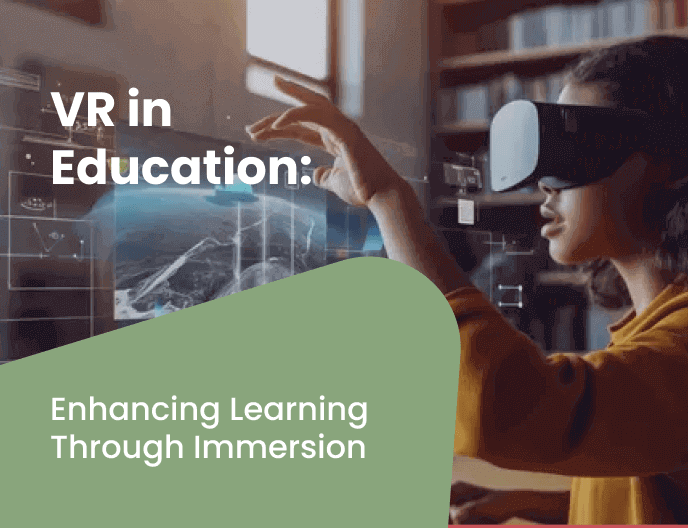VR in Education: Enhancing Learning Through Immersion
Written by
Krista Alvarez
Published on
May 01, 2024
Time reading
2 minutes

Virtual reality (VR) has moved from the entertainment world into a variety of sectors, including education. Once confined to the world of science fact, virtual reality is now transforming classrooms into dynamic learning environments. Its ability to transport students into simulated worlds takes education to a new level of possibility, stimulating deeper learning.
Moving outside the textbook
Traditionally, education has been based on textbooks and lectures to impart knowledge. While these methods serve their purpose, they often lack the power to truly capture the imagination of students. Virtual reality, on the other hand, adds interactivity to the learning process. Imagine studying a virtual frog in a biology class, exploring the surface of Mars in an astronomy class, or walking the streets of ancient Rome in a history class. But, how VR can affect students?
Involving all students in personalized learning
VR is not a single solution. Its flexibility allows educators to tailor the learning experience to individual needs and learning styles. Students who struggle with traditional methods may find VR a more interesting and effective way to understand complex concepts. These simulations can be set at different levels of difficulty, providing a safe space for students to try and learn from their mistakes without affecting the real world. Also VR experiences can adapt to a variety of learning styles, including visual and auditory.
Improved collaboration and social interaction
While virtual reality on its own provides an amazing experience, its potential goes even further in cooperative learning environments. Imagine virtual field trips where students explore historical sites or conduct science experiments together, developing teamwork and communication skills. VR platforms can also connect students in different locations, creating global classrooms that overcome geographical boundaries. Now, let’s face the future possibilities of VR, as it can be one of the most interesting parts we all waiting for.
The future of education: a blended learning approach
Virtual reality is not aimed at completely replacing traditional teaching methods. Rather, it offers the opportunity to create blended learning environments that use the best of both traditional and VR-based approaches. VR can be used to introduce new concepts, provide practical application, and reinforce understanding, while traditional methods can be used to practice deeper analysis and critical thinking.
Conclusion
VR’s impact on education will undoubtedly increase, and engineers all over the world are working to be the driving force behind this change. They can provide teachers with the tools they need to create powerful learning experiences that truly inspire and empower their students.
We believe that virtual reality has the potential to create access to knowledge and quality education for everyone, no matter their location. By promoting a love of learning students’ interest, VR can open the door to a better future where education is not just a tool, but a truly rich journey.